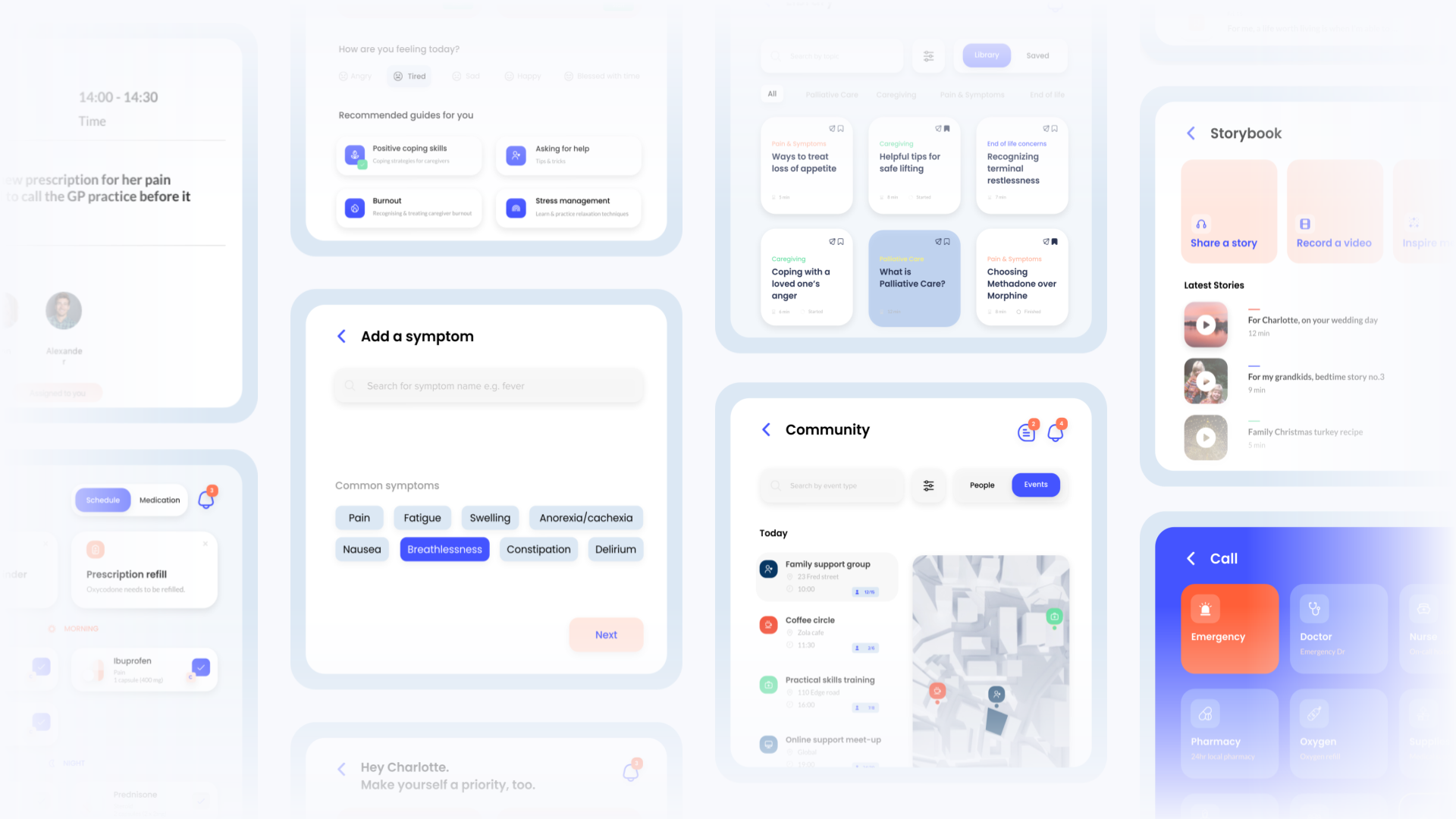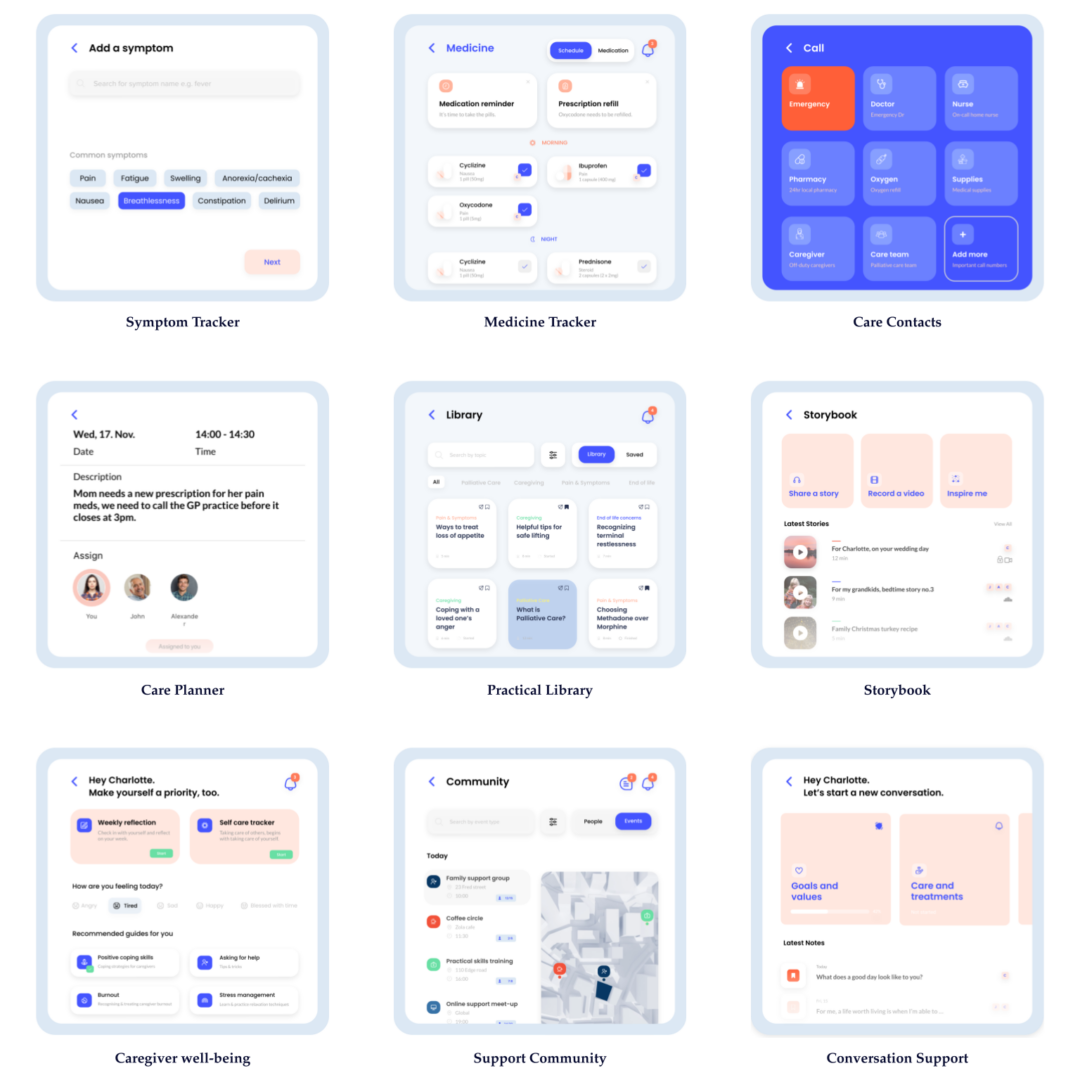Co-Creating Pal: How User Feedback Shaped Our Solution

Pal

Pal

From the very beginning, we knew the only way to build something truly meaningful was to involve our users every step of the way. Understanding the gravity of the everyday challenges of our users, we didn’t want to rely just on our personal experiences. Instead, we wanted to create something that would genuinely help families everywhere.
The result wasn’t just ours—it’s a reflection of over 120 care recipients, past and present caregivers, and clinicians worldwide. It is a product of their stories, everyday challenges, wishes, and validation.
Here’s a behind-the-scenes look at that journey.
Our first step was to deeply understand the real challenges our users face. Having leaned on online caregiving communities ourselves, Reddit was one of the first places we turned to. We reached out to families and healthcare teams everywhere, inviting them to speak with us.
Over 120 individuals from 15 countries generously shared their time, ideas, and stories through surveys, emails, video calls, and in-person meetings. We had in-depth conversations with 90 care recipients and caregivers, and 30 healthcare providers—including palliative care doctors, nurses, GPs, and researchers.
One of our proudest achievements was the global scope of our research. Engaging participants from 15 countries wasn’t just about increasing numbers—it was about understanding the broader context in which our app would be used. So we deliberately sought input from families across diverse regions, including the UK, US, Netherlands, Canada, Germany, Australia, Singapore, Mexico, Hong Kong, and more.
Healthcare systems vary significantly across regions, as do caregiving roles and expectations. By tapping into this diversity, we wanted to make sure that our solution would be inclusive, flexible and scalable.
Their experiences revealed universal pain points and needs, guiding us to design a solution that truly addresses what users wanted—not just what we thought they needed.
In our conversations, we focused on:
Here’s what they told us:
Once we identified the core problems, we brainstormed potential solutions. We built simple prototypes and brought them back to our community for feedback. To better understand their most pressing needs, we also asked for their feedback and prioritization on 9 suggested solutions.
Our initial 9 solutions were:

This is how our community ranked the solutions:

With our community’s feedback in hand, we focused on designing the top-voted features. As the design progressed, their input continued to shape our decisions. Here are some notable insights:
These features weren’t just informed by user feedback—they were co-created with users, ensuring relevance and usability.
By taking a collaborative approach, we designed a solution that doesn’t just solve problems—it solves the right ones. We truly believe that the best solutions are co-created with the people they’re designed to serve. User feedback isn’t just a phase of development; it’s a philosophy that drives every decision.
We believe that the best solutions come from collaboration with the people they’re meant to serve. For us, user feedback isn’t just a step in development; it’s the guiding principle behind every decision we make.
As we continue to evolve and grow, this commitment to user feedback will remain at the heart of what we do. After all, the people who use our app are the ones who inspire us to make it better every day.

Written by Pal